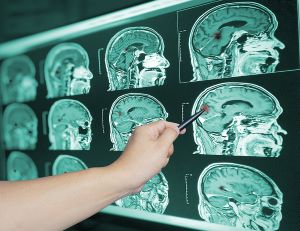 A new study published in the Journal of Neuroscience looked at visual processes in the brain.
A new study published in the Journal of Neuroscience looked at visual processes in the brain.
“We were focusing particularly in the older part of the brain or mid-brain, which is important for lower-order animals such as frogs, lizards, and birds,” study author Masatoshi Kasai told us. “The superior colliculus is the center for sensory integration and sensory-motor transformation.”
Researchers wanted to know how the superior colliculus, which controls the unconscious signals in the brain, works to transform the visual information to the higher order of the brain, or the conscious level of visual perception.
“Our hypothesis was that the unconscious signals in the superior colliculus and the conscious signals in the cerebral cortex were somehow merged somewhere,” Kasai told us. “We want to show that the cerebral cortex is important for our visual perception.”
Researchers were hoping to find out why the architecture within the superior colliculus in mice (rodents) appeared in their studies and not in others. The brain is structured such that the neurons within are interconnected in a network of circuits. The neurons need to be arranged at specific angles depending on the visual information, culminating in an overall structure or architecture that is optimal for visual processing.
“The most well-known architecture in the visual part of the cerebral cortex is called the pin-wheel structure, which is a continuous pattern of specifically angled neurons that differentially respond to the visual information received by the eyes,” Kasai told us. “The pin-wheel is known to be found in mammal studies such as cats and primates, but interestingly, the cerebral cortex in rodents does not show the structure. In our studies, however, the pin-wheel was found in mouse superior colliculus. This finding is still controversial as other research groups have not found it in mice, and we are wondering if the structure is dynamically changeable.
Researchers noticed that the mid-brain in mice responded to the isoflurane anesthetic compound but not to others, so they hypothesized that some chemical property in isoflurane was important in the changing structures seen in the mid-brain.
Research of the visual processes at the entry stage, namely the retina, and the endpoint, the cerebral cortex, are abundant but relatively few in the mid-brain. So, it was a natural choice as little is understood in that part of visual processing.
To test their theory, as electron microscopes are limiting, they used fluorescent-light microscopes that enabled the researchers to see and map the changes in spatial distribution and arrangement of neural cells within the sample area in a specified time lapse.
“We compared the brain states, specifically the neural cell structure, when the mice were awake and under anesthesia,” Kasai told us. “During the waken state, the neural cell structures were randomly ordered or activated, which seems inefficient. We were intrigued when we obtained the ordered cell structure in the sleep state.”
The results were definitely unexpected to researchers in terms of the structure that was revealed in the superior colliculus and opened up new questions about what is happening there.
“The studies we conducted are still basic, but they are important in that they may help us to better understand the mid-brain visual processes, as well as the relationship between the cerebral cortex and the midbrain in terms of how visual information is integrated in order to create our visual perception,” Kasai told us. “If further studies support the correlation between superior colliculus activity and attention disorders, then clinical applications using drug therapy to treat attention disorders such as Attention Deficit Hyperactivity Disorder become possible.”
Patricia Tomasi is a mom, maternal mental health advocate, journalist, and speaker. She writes regularly for the Huffington Post Canada, focusing primarily on maternal mental health after suffering from severe postpartum anxiety twice. You can find her Huffington Post biography here. Patricia is also a Patient Expert Advisor for the North American-based, Maternal Mental Health Research Collective and is the founder of the online peer support group - Facebook Postpartum Depression & Anxiety Support Group - with over 1500 members worldwide. Blog: www.patriciatomasiblog.wordpress.com
Email: tomasi.patricia@gmail.com